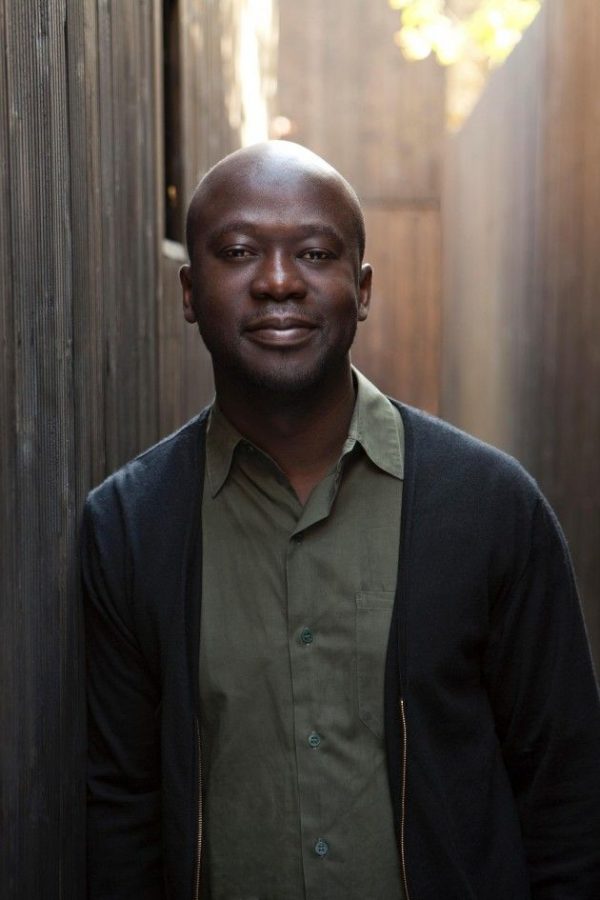David Adjaye Presents Center for Art and Culture Design, Addresses Concerns
World-renowned architect David Adjaye presented schematic designs for the proposed Colgate University Center for Art and Culture (CAC) to the Village of Hamilton com-munity in the Class of 2003 events room at the Colgate University Bookstore Aug. 26.
“The basic idea is to make some-thing that enhances the quality of cultural infrastructure in the village and to enhance the public space as well and to bring a really beautiful collection right into the heart of the village,” Adjaye said.
The CAC is a synthesis of two cur-rent collections located on campus, the Longyear Museum of Anthropology in Alumni Hall and the Picker Art Gallery in the Charles A. Dana Arts Center.
“Both the Picker and the Long-year were long overdue to be looked at and to really make art take a more prominent place at the university. And so we really began to look at what were the opportunities out there and this concept of a Center for Arts and Culture, of bringing the two collections together under one roof really grabbed some momen-tum,” Associate Vice President for Community Affairs and Auxiliary Services Joanne Borfitz said.
According to Adjaye, Longyear is a collection of mostly ethnographic sculptures from South America and South Africa as well as Native American artifacts and textiles. The Picker collection features pieces spanning from the late nineteenth century to the late twentieth cen-tury, including photography, print-making and early modernists paint-ings. The galleries curate different shows throughout the year; all of the displayed pieces were donated to the community and university.
The CAC will also include a community gallery, which will be utilized as a multi-purpose room, a space in which students can do hands-on learning and the towns-people can hold meetings.
The process to implement the new cen-ter has been ongoing since the summer. The Board of Trustees must approve of the concept this month, and then the Village of Hamilton must change its zoning.
“Currently the museum is not allowed in the site where we would like to put it, so we put in a formal application to change the zoning and there’s a number of steps that are involved in that so we are a long way from making this happen at this point in time,” Borfitz said.
The center, which will encompass 18-20 Utica Street, intersecting Madison Street, will be 15,500 thousand square feet, lo-cated on a 35,000 square foot site area. The one-story building will be rectangular, the most flexible shape for housing vari-ous forms of art, and will have 18 – 20 feet ceilings, standard museum size.
Adjaye will adhere to the “language of the community” by working with mate-rials already present in Hamilton: stone and timber.
“We want to work in a more minimalist, classical approach,” Adjaye said.
Adjaye plans to prevent the CAC from being solely an internal experience by uti-lizing skylights and glass walls.
“It will be transparent. It will be lu-minous so that you can see the content,” Adjaye said.
A director is currently being sought, but museum consultants, service engi-neers and construction professionals are already involved.
The center will connect Hamilton to the museum trail that runs throughout New York, which will entice people to visit the village.
Because of the open meeting, Ham-ilton locals were able to take on a role in the process.
“I wanted to understand the conceptual plan that they were going to take before be-cause as much as I like the concept of the museum, the physicality of it is important to me to make sure that it sort of works with our community,” Hamilton resident Roger Bauman said.
After Adjaye’s presentation, participants voiced concerns during an extensive ques-tion and answer period. They raised issues of parking availability, environmental sus-tainability and winter weather accommo-dations, all of which Adjaye said are being taken into consideration.
Adjaye also acknowledged that this building is something new in an old village.
“It’s really important for us to get the community involved and excited about this project … we want to hear their input and get their ideas at this early stage so we can incorporate those and ultimately build them into the finalized plan,” Borfitz said.
Most of the townspeople are looking forward to the new addition.
“I really think it’s beneficial for the community in lots of ways. Basically for economic reasons, I think it’ll enroll folks downtown to help the current businesspeo-ple,” Bauman said. “From a cultural sense, it’ll just give me another option beyond the movie theater and the Palace Theater and the concerts at the Barge. They’re all good places, but this is just another piece of the puzzle.”
Although mostly Hamilton residents attended the meeting, the CAC will primarily cater to Colgate students.
“Right now we have one gallery. It’s not flexible. It’s not climate controlled,” Senior Curator of the Longyear Museum of An-thropology Carol Ann Lorenz said. “We are very limited in what we can do there. So this will completely change the picture for us.”
Lorenz said she looks forward to uti-lizing the archives and the state of the art facilities that are conducive to interactive learning, such as the easily accessible arti-facts and touch screens.
“[The CAC] will give [students] a top-notch facility to attend classes, to view art and objects, a place where there can re-ally be exciting different programming go-ing on that we don’t have at the moment now. And it will bring them to community, and I think that is a real plus, both for the students and the community,” Borfitz said.
Contact Julia Queller at [email protected]







